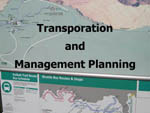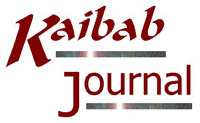|
|
Oral
Testimony before the Dr.
Dennis Foster |
|
|
|
||
|
Good morning Chairman Hansen and members of this sub-committee.
I wish to thank you for inviting me to speak today on this
important issue of access to our national parks.
I appear before you as someone who has both an academic and
personal interest in the Grand Canyon.
I have been hiking the canyon for twenty years and have logged over
250 nights camped in its backcountry.
The actions of the Park Service, some already undertaken and others
planned, seem premised on distancing and discouraging visitors from the
Grand Canyon. Taken together
these actions are likely to lead to an erosion of public interest in this
spectacular park.
The current transportation plan at the Grand Canyon is one more effort
being made by the National Park Service to control and limit visitation.
For example, officials have repeatedly stated that the “carrying
capacity” of the South Rim is but 22,000 visitors a day.
This is quite extraordinary given that the park is almost as large
as Delaware. Such a notion
has not been defended, perhaps because it cannot be defended.
I would like to talk for a few moments about this transportation plan and
its shortcomings. As you may
already know, the proposal is to have visitors park seven miles from the
rim, outside the park boundary, and board a train to enter the South Rim
developed area. The train
will run to the Canyon View Information Plaza and then to the South Rim
Village, and finally back out to the parking lot in Tusayan.
The rationales put forth by the Park Service in support of this plan is
that it will reduce visitor frustration, reduce visitor congestion, reduce
noise, reduce pollution and, in general, improve the quality of the
visitor experience. At best
these arguments are misleading. At
worst, they are out and out falsehoods.
I have yet to see any documentation that any of these arguments are
more than fanciful thinking by people seemingly bent on controlling the
visitor’s experience at Grand Canyon.
For example, on the topic of congestion, park officials are fond of saying
that on the busiest days at Grand Canyon there are 6,000 cars vying for
3,000 spaces. This implies
that all of these vehicles are looking for spaces at the same time, which
is patently false. If it were
true, you would have to conclude that the proposed rail system will be
woefully inadequate, even though it is expected to cost upwards of $200
million to build. That is,
6,000 cars means about 20,000 visitors.
The trains can hold a maximum of 450 people.
If a train comes by every 15 minutes, it would take over 11 hours
to clear this many people. So,
should we conclude that officials at the Park Service are lying when they
say that 6,000 vehicles are chasing after 3,000 spaces?
Or, should we conclude that they are just extraordinarily
incompetent in designing this enormously expensive system and being unable
to accommodate this visitor load? Of
course, these choices are not mutually exclusive.
The cost issue is so mind-boggling that I can hardly believe that there is
any serious support for this proposal.
A current “best guess” is that this plan will cost each visitor
about $15 – a cost which is separate from the entrance fee.
If you have a Golden Eagle, or an annual park pass, you will still
have to pay the transportation fee. No
exemption for seniors. No
exemption for children over five. No
exemptions for overnight visitors at the park hotels.
And, no exemptions for those passing through, via the East Rim
Drive, who may not even ride the train.
Will visitors find that congestion is lessened?
No.
Will visitors find that frustration has lessened?
No.
Will visitors find that it is quieter?
No.
Will visitors find that there is less pollution?
No.
Will visitors find that the quality of their visit has improved?
I can’t imagine that it is even remotely possible to conclude
that this could happen. I
used to think that most visitors will be worse off with this plan, but,
now I think it is possible that every single visitor will be negatively
impacted by this system.
I would suggest that there are two solutions to this problem – an
“easy way out” and a “simple way out.” The easy way out is to build a parking area at the Canyon
View Information Plaza, which the Park Service said it was going to do in
its General Management Plan, finalized in 1995.
Leave the Village parking intact; improve the infrastructure and
provide a bus shuttle service on a voluntary basis.
Five years ago, based on data in the GMP, I estimated that this
would cost about $10 million.
The simple way out is to redraw the national park boundary so as to
exclude the South Rim Village and the developed areas nearby, allowing
room for growth regulated by normal county guidelines.
This would amount to about six square miles – all of which is
above the rim. The notion
that the Park Service should be our Big Brother and control our every move
along the rim is indefensible, and it should not be their job. |
||
|
|
||
|
|
||

